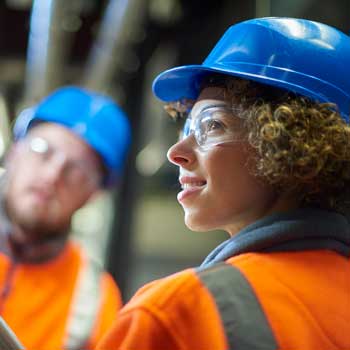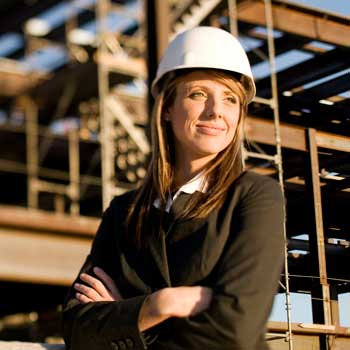Construction careers are most suitable for individuals with high levels of skill, pride and determination; they’re perfect for anyone with a passion for creating and working with their hands. While these qualities could be found in anyone, regardless of gender, somewhere along the way construction careers have become synonymous with a man’s job.
This sentiment still rings true today. With only 10.3% of the construction workforce comprised of women, the industry has a long way to go before it can claim true workforce gender diversity.
However, the industry has begun to take those first steps. With so many opportunities in construction, women are joining the industry and finding success and pride in the skilled crafts. As they pave the way for themselves and their peers who want to become craft professionals, they are taking the industry by storm.
These are the ways women are making strides in their careers.

Construction careers place high emphasis on skills. With craft professionals undergoing training, apprenticeships and years of training under a watchful eye, they possess an artillery of skills that allow them to complete their jobs on time and with precision.
These skills are currently in high demand, and with high demand comes high salaries. The best part? These salaries are dependent on the skills that a craft professional possesses, not their age, gender or race. For women, this means pay equity.
In the construction industry, women made 99.1% of the pay that their male counterparts earn. Compared to the national average of 81.1%, women in the construction industry are experiencing more equality than those in different industries.
This means that while women may not yet be equally represented, they are experiencing gender equality and opportunities that other industries cannot provide.
With a growing number of women in the industry, networks, organizations and conferences have been established to bring these professionals together and create a community of women who are craft professionals and working in construction. These communities allow for collaboration, innovation and progress to be made in each individual’s lives and for the industry as a whole.
Here are some great resources for women in construction:
Women aren’t just joining the industry in greater numbers; they are also increasingly holding leadership positions and climbing the ranks in their company.
Between 2007 and 2018, women-owned construction firms have increased by 94%! On top of that, 44% of the top 100 contracting companies now have women in executive positions.
By increasing the number of women in executive and ownership positions, companies will be able to have a more diverse perspective when shaping hiring processes, company culture and so much more. This will further encourage women to join the industry and pursue a career in the crafts.

With only 10% of the workforce comprised of women, those within the industry are tackling gender bias head-on as they pave the way for themselves and future craft professionals.
One of the largest advances in the industry has been the emergence of personal protective equipment created just for women. Ill-fitting safety equipment isn’t just uncomfortable, but can be dangerous when working on the job. With improperly fit men’s equipment, women are more likely to be injured on the job.
Luckily, there has been more resources and equipment available for the women in the industry today. With researched lists of the best equipment for women in the workforce and new companies releasing equipment specifically for women, the job has become safer and more accessible to women.
Finally, women are proving the value of gender diversity by putting money behind their employment. The research report “Delivering Through Diversity” found that construction companies that had more women in executive roles than staff roles experienced higher financial performance than other companies on average. By proving the benefit of having diverse voices both on the jobsite and in the office, women are proving the value of their work.
All in all, the industry has a long way to go before the construction workforce mirrors the national workforce as a whole. However, as we work our way toward equal representation, women are making hard and fast strides toward bettering the industry as a whole. As women increasingly become skilled craft professionals, they will be walking into an industry ready to accept them where they can thrive.